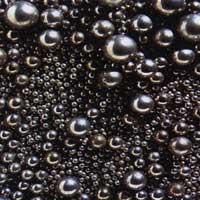Fusion in bubbles
In March, some American physicists from the Oak Ridge laboratory in Tennessee wrote in an article that led to a cold fusion. The team was led by physicist Rusi Taleyarkhan. Another team from the same organization tried to repeat the experiment but did not. However, the journal Science decided to publish Taleyarkhan's article, a decision that was justified by editor Donald Kennedy in the March 8 issue published by To Publish or Not to Publish.

In this experiment an alleged fusion was achieved by the use of acetone; in the bubbles generated in this solvent the deuterium was merged due to the action of the sound waves. Fusion is believed to have occurred during the implosion of the bubbles. Now, a group at the University of Illinois observes the implosion of bubbles in another experiment, published in the journal Nature on July 25.
They have used air bubbles in the water. The process has been launched under the influence of sound waves and reactions have been detected between the gases trapped inside when the implosion of the bubbles occurs. These reactions dissipate the heat necessary for the fusion to occur. As a result, reactions prevent fusion, it has been reconfirmed that cold fusion is practically impossible.
The decision of the journal Science was not, therefore, very successful, so several critical opinions have been issued. In addition, the hope of unlimited energy has again diminished.
Buletina
Bidali zure helbide elektronikoa eta jaso asteroko buletina zure sarrera-ontzian











